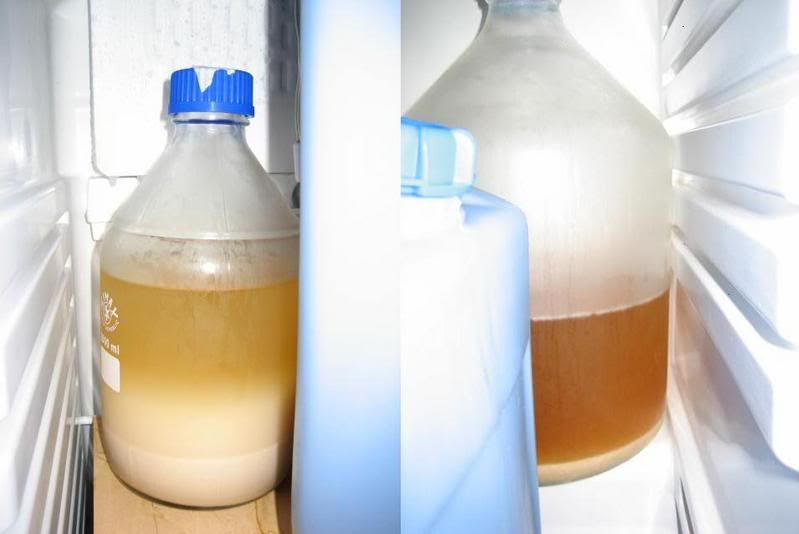hughman666
Well-Known Member
- Joined
- 17/1/06
- Messages
- 531
- Reaction score
- 8
Hi all,
I realise that various sections of this topic have been covered in various different topics. However, many of them are 5+ pages long and sometimes containing conflicting opinions which have made this one area of major confusion for brewers getting into liquid yeasts. for example i personally found chiller's thread confusing because of the "this jar, that jar" discussion which then went off into a disagreement about chemicals used to wash yeast with.
I'm looking to get a definitive idea of the easiest way of storing and re-using the yeast slurry from a brew for future batches, bearing in mind that a lot of newer brewers won't have access to the chemicals that have been mentioned in previous posts for washing yeast etc. Feel free to post pics of your own process to help out others.
This thread won't deal with splitting up new smackpacks or whitelabs vials, just storing and re-using the slurry.
We can use my latest yeast slurry for the experiment. It's a Wyeast 3068 which has spent 8 days in primary. I collected the slurry into a 2 litre starter bottle as per below:

as you can see, it has seperated out with the 3068 at the bottom.
so, without just redirecting us to a previous thread:
1. what's the best way to store this? can i split it up into individual bottles? do we need to remove the top bit first and if so, how?
2. what temps do you need to store the yeast under if being used:
within 1 week (can it stay at room temp in the starter bottle?)
within 8 weeks
3. finally, when it comes time to re-use the yeast, do you need a starter or can you just repitch ~100mls directly into the wort? is this determined by whether or not the yeast has been stored for a certain amount of time?
Cheers,
Hugh
I realise that various sections of this topic have been covered in various different topics. However, many of them are 5+ pages long and sometimes containing conflicting opinions which have made this one area of major confusion for brewers getting into liquid yeasts. for example i personally found chiller's thread confusing because of the "this jar, that jar" discussion which then went off into a disagreement about chemicals used to wash yeast with.
I'm looking to get a definitive idea of the easiest way of storing and re-using the yeast slurry from a brew for future batches, bearing in mind that a lot of newer brewers won't have access to the chemicals that have been mentioned in previous posts for washing yeast etc. Feel free to post pics of your own process to help out others.
This thread won't deal with splitting up new smackpacks or whitelabs vials, just storing and re-using the slurry.
We can use my latest yeast slurry for the experiment. It's a Wyeast 3068 which has spent 8 days in primary. I collected the slurry into a 2 litre starter bottle as per below:

as you can see, it has seperated out with the 3068 at the bottom.
so, without just redirecting us to a previous thread:
1. what's the best way to store this? can i split it up into individual bottles? do we need to remove the top bit first and if so, how?
2. what temps do you need to store the yeast under if being used:
within 1 week (can it stay at room temp in the starter bottle?)
within 8 weeks
3. finally, when it comes time to re-use the yeast, do you need a starter or can you just repitch ~100mls directly into the wort? is this determined by whether or not the yeast has been stored for a certain amount of time?
Cheers,
Hugh





